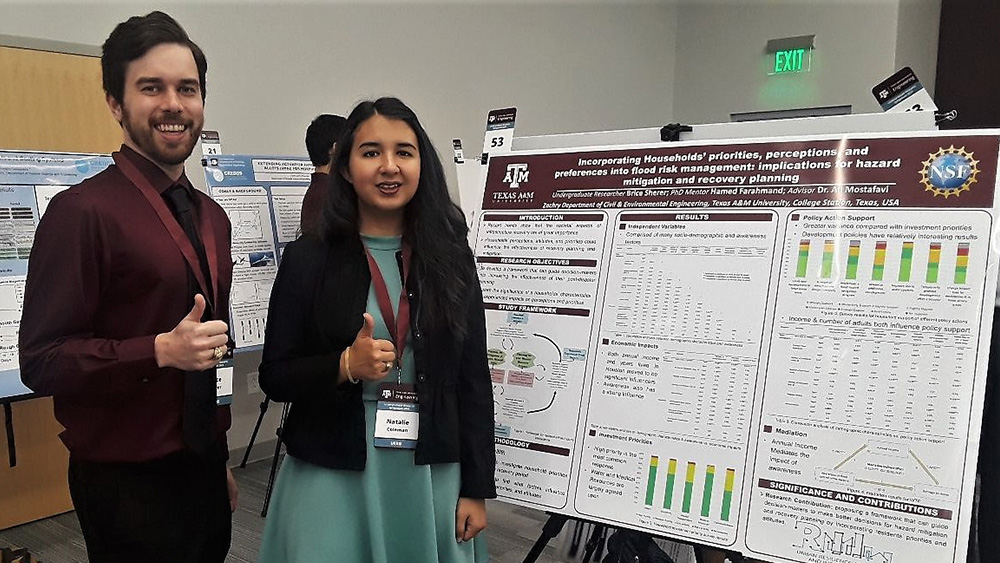
Natural disasters present unique challenges to civil engineers because they can damage infrastructure systems such as transportation, power and communication services. Disruptions in any of these services could dramatically impact the livelihoods of an area’s residents. Two students — Natalie Coleman and Brice Sherer — dedicated their summer to participate in the Undergraduate Summer Research Grant (USRG) program to learn more about the relationship between people and their environment to build sustainable and resilient communities.
Coleman, a senior in the Department of Civil and Environmental Engineering at Texas A&M University, worked on a research team in Dr. Ali Mostafavi’s lab, which develops interdisciplinary solutions to mitigate the impacts of natural disasters.

Her work focuses on the societal impacts of infrastructure service disruptions on different social subpopulations in a community. It investigates whether the social characteristics of a community can influence the disaster experience.
“One of my research projects has focused on how socially vulnerable populations (such as households classified as having low income, minorities, young children or medical conditions) were affected by the infrastructure service disruptions caused by Hurricane Harvey in 2017,” said Coleman. “I have analyzed data to determine which social groups or areas were more exposed and more sensitive to the service outages.”
The team’s work, which included input from Amir Esmalian, doctoral student in the department, resulted in a system that integrates the physical and social vulnerabilities of a community into an equitable infrastructure resilience model. Since communities often space tight budgets and limited funding, resources and time, the model will guide community leaders in the process by helping them decide on issues regarding the restoration and investment of infrastructure systems.
“There may be certain groups of people or areas within a community which are more vulnerable to disruptions in the power service,” Coleman said. “This information would then allow community leaders to know which groups or areas to prioritize in the event of a power outage. In doing so, it will recognize the individual needs and expectations people have on infrastructure systems.”
Coleman’s goal as a civil engineering student has always been to build and maintain communities by applying the lessons she’s learned in the classroom to real-world problems. Infrastructure systems are vitally important to those communities because the people constantly depend on the services from the systems.
“I understand the devastating impact that natural disasters have on communities by disrupting their infrastructure systems, and I want to be a part of the effort to mitigate those impacts,” she said. “I find it interesting that we are looking at the disaster impact from a holistic view and introducing the human element to civil engineering practices.”Sherer, a senior construction science student at Texas A&M, also dedicated much of his summer to working in Mostafavi’s lab with Hamed Farahmand, a doctoral student in the civil and environmental engineering department.
“I first started studying the subject of resiliency and had no prior knowledge on it or research experience before starting this program,” Sherer said. “When I gained acceptance into the USRG program I got a head start by reading some relevant papers on the topic. This area of research interested me because many of my immediate family members were either physically or economically harmed by the recent catastrophic floods in the Houston area. I wanted to learn more about what occurs during the recovery process and hopefully how to improve it.”
With this personal drive he focused his efforts on the priorities, attitudes and preferences of households during the recovery period after the flood.
“The influencers we looked at consisted of a household’s demographic characteristics, awareness factors and experienced economic losses,” he said. “We wanted to see how these factors interacted with each other and also how they influenced effective recovery planning.”
The USRG program is dedicated to hosting students from around the world over the summer to become more familiar with the research process in a field that interests them. Students are paired with faculty members and graduate student mentors to aid in their efforts and participate in a poster session at the end of the summer.